Table of Contents
- Does timing matter in email marketing?
- What is the best day to send emails?
- What is the worst day to send emails
- When is the best time to send emails?
- What other email marketers say
- When is the worst time to send emails?
- Factors that affect the timing of sending your emails
- Measure your email marketing strategy and performance
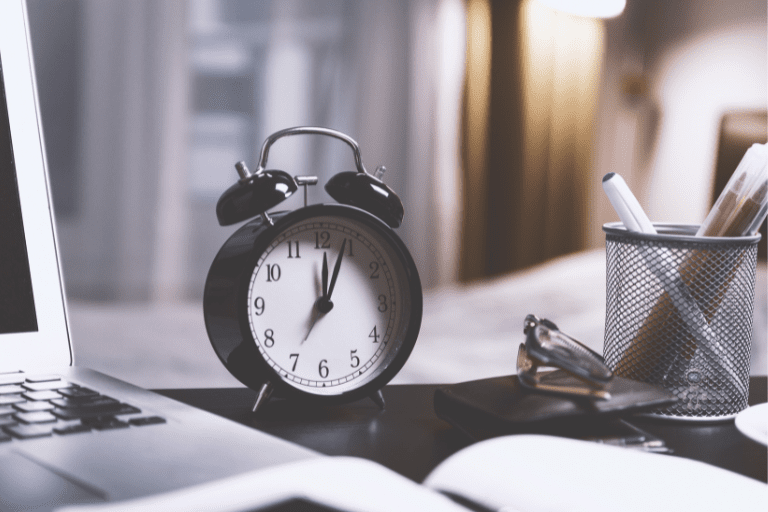
They say, “timing is everything”, but when is the best time to send email marketing?
The quick answer is this: Tuesdays at 11am.
But that’s not the whole story… if you want to get more people to open your emails and drive more sales, you need to know when YOUR ideal customers are online!
And, of course, you not want to restrict your marketing efforts to one email sending time.
So in this article, we’ll dive deeper into the email marketing benchmarks to help you determine the optimal timing for your next email marketing campaign.
Let’s dive in!
Does timing matter in email marketing?
Every business and every campaign is different. But there is one key factor that remains the same in terms of timing your email sends.
And that’s timeliness.
When it comes to sending emails, it’s essential to understand why the timing of your emails matters.
After all, sending your emails at the right time can mean the difference between a successful campaign and a failed one.
Here are a few reasons why timing is essential when it comes to email marketing:
Maximizes open rates
Sending your emails at the right time can increase the chance that your email subscribers will open and read them. For example, sending your emails during business hours when people are more likely to be checking their emails can increase the chances of your emails being opened.
Improves click-through rates
Timing your emails can also impact your click-through rates. By sending your emails when your subscribers are more likely to be engaged and paying attention, you can increase the chances of them clicking through to your website or landing page.
Reduces unsubscribes
If you’re sending your emails at the wrong time, your subscribers may become annoyed and decide to unsubscribe from your list. Or you might find your emails being deleted in the morning inbox purge (it’s a thing!). By sending your emails when your subscribers are more likely to be receptive to them, you can reduce the chances of losing subscribers.
Increases revenue
By timing your promotional emails around important events, holidays, or promotions, you can increase the chances of your subscribers making a purchase. For example, sending a promotional email on Black Friday or Cyber Monday can lead to increased sales.
What is the best day to send emails?
The best day to send an email campaign can vary depending on factors such as your target audience, industry, and the type of content you are sending.
In general, studies confirm there are certain times and days that tend to result in higher email open rates and click-through rates.
According to several studies, including one conducted by Sendinblue, weekdays tend to have the highest open and click-through rates for emails.
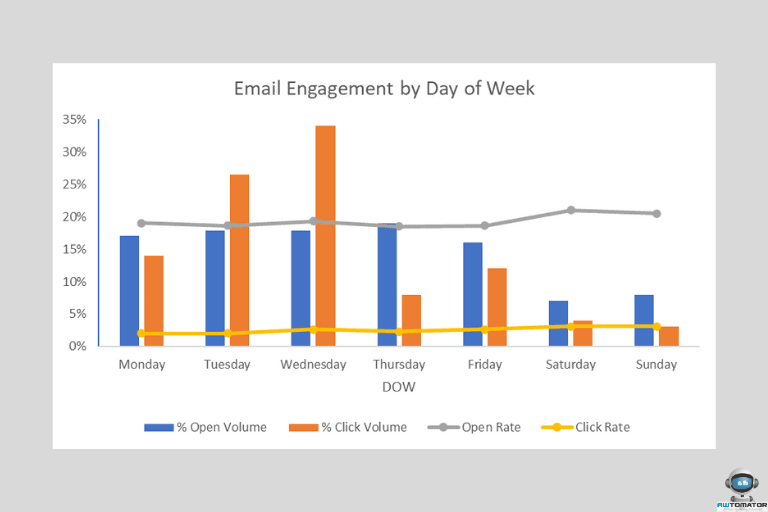
In fact, weekdays account for over 85% of the total weekly open rate and nearly 95% of the weekly click rate. This means that if you want to maximize the effectiveness of your email marketing campaigns, you should aim to send them on weekdays.
Specifically, it has been found that Tuesdays and Thursdays are the most optimal days to send email campaigns. These days tend to have the highest open rates, means people are actually seeing your emails.
And when it comes to click-through rates, it seems that Tuesdays and Wednesdays are the best days to send email campaigns.
This discrepancy between open rates and click-through rates could be due to several factors.
For example, email subscribers may be more likely to open emails on days when they have less email traffic or when they are multitasking on a zoom meeting.
But, they may be more likely to engage with your content when they have more time or when they are in a more focused state of mind.
Therefore, the best days to send emails, according to several studies are mid week, specifically Tuesday, Wednesday, and Thursday.
What is the worst day to send emails
According to data from various email marketing studies, weekends, both Saturday and Sunday, are not the best days to send an email blast.
Saturdays and Sundays, tend to have the lowest open rates and engagement compared to weekdays.
According to data from Campaign Monitor, the open rates for emails sent on Saturdays and Sundays are 20.5% and 20.3% respectively, both having the lowest open rates among the rest of the days in the whole week.
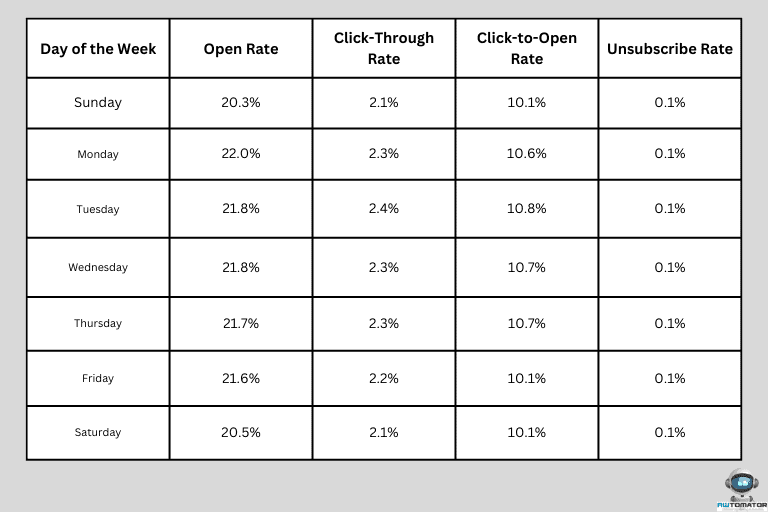
Here are the possible reasons why:
Low Engagement
People tend to be more relaxed and less focused on work-related matters during the weekend, and they’re likely to have plans that don’t involve checking their inbox. This means that your email is more likely to be ignored or deleted without being opened.
Working Hours
Many people check their email during their working hours, and sending emails outside of those hours may mean that they will not see your message until much later.
Different Time Zones
People in different time zones may be asleep or just starting their weekend when you send your email, which means that they won’t see it until much later or may miss it altogether.
So, it’s clear that weekends, especially Sunday, is the worst day to send a particular email campaign.
To increase the likelihood of your email being seen and engaged with, it’s better to send your email blasts during the week when people are more likely to be at their desks and focused on work-related matters.
When is the best time to send emails?
Now, let’s take a look at the data for each day of the week to see what is the best time to send an email.
Data from MailerLite shows that 11 AM is the peak time when people tend to open their emails on a Monday. Most of the time, it’s right after people have had their morning coffee and have settled into their workday.
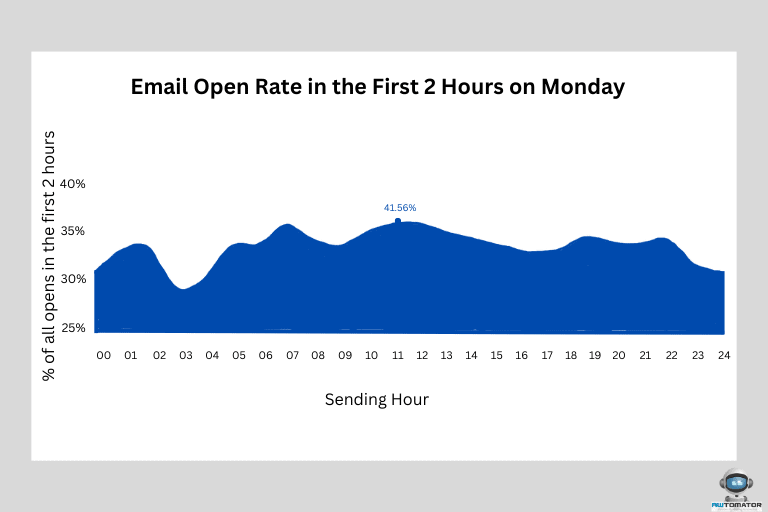
On Tuesdays, Wednesdays, and Thursdays, email opens tend to peak at around 12 PM.
Additionally, Friday mornings from 10 AM-12 PM are the best times to send emails on Fridays, with another spike in email opens around 8 AM.
Now, let’s take a look at Moosend’s findings. It shows the best specific times to send emails in the morning, noon, and late afternoon to maximize open rates.
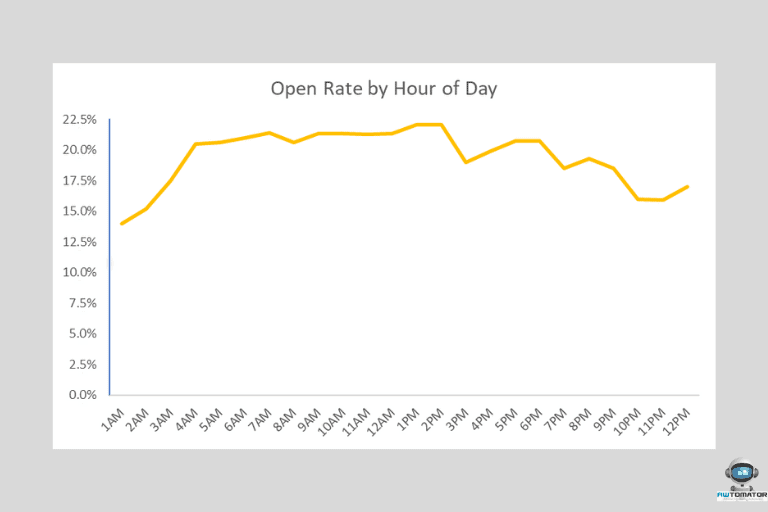
Emails sent between 9-10 am have an average open rate of 21.35%. This finding indicates that a significant percentage of people check their emails early in the day, possibly during their morning commute or just after arriving at their office. Sending emails at this time may help ensure that your message is seen and read promptly.
Another peak hour for email open rates is between 1-2 pm, with an average open rate of 22.09%. This time slot may be an excellent option to get your message noticed and opened more frequently, as people tend to be more alert and attentive after lunch. Moreover, people may have completed their most pressing work tasks and are likely to have some time to browse their inbox.
The late afternoon, specifically between 5-6 pm, is another recommended time to send emails, with an average open rate of 20.74%. At this time, recipients may have completed their workday and are wrapping up their final tasks before leaving for home.
They may also have time to browse emails on their commute home. As a result, they may have more time to check their emails and engage with your content.
So, can we conclude that the best times to send marketing emails are between 9-11 am and 12-2 pm? Let’s hear what other email marketers say.
What other email marketers say
According to a survey of over 300 U.S. email marketers, the majority reported that the best times to send emails for maximum engagement were between 9 AM to 12 PM and 12 PM to 3 PM.
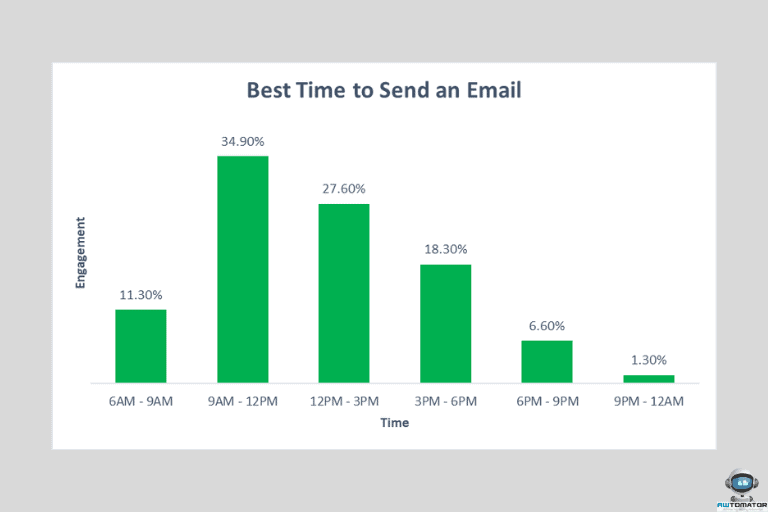
There are a few reasons why these times might be the best for email engagement.
First, during the morning hours, people tend to be more alert and focused, making it a good time to grab their attention. Second, during the midday hours, people may take a break from work and check their personal email, which can result in higher open and click-through rates.
Through these findings, we can conclude that the best times of sending emails are around late morning, midday, and early afternoon.
When is the worst time to send emails?
We’ve covered the best times to send emails. But it’s equally important to understand the worst times to send emails, which can lead to low open rates and reduced engagement.
According to research conducted by Moosend, GetResponse, HubSpot, the worst times to send emails are between 7 pm to 5 am (Moosend), 6 pm to 3 am (GetResponse), and 6 pm to 5 am (HubSpot).
This means that sending emails during these time slots (late nights and early mornings) may result in lower open rates and less engagement from your audience.
Generally speaking, it’s recommended to send emails during standard business hours, as many people tend to check their emails during work hours.
However, it’s also important to consider the time zone and the preferences of your specific audience when determining the best time to send emails.
Factors that affect the timing of sending your emails
Email timing can be affected by various factors, including:
Marketing Goals
The marketing goals you have for your email campaigns will impact the timing of your emails.
For example, if you want your audience to open and read your email’s educational content, you may want to send it during a time when they are less likely to be busy or distracted.
If you want your audience to click through to a promotional offer, you may want to send it during a time when they are most likely to be looking for deals.
If you are reminding subscribers there is only an hour left before your offer ends, then you’d better send that email an hour before the offer ends… even if that’s 11pm!
Time zone
If you have a global audience, you need to consider the time zones of your recipients.
Obviously, it’s best to send your email when the majority of your audience is awake and checking their email.
Type of Email
The type of email you’re sending can also affect the timing. For example, if you’re sending a promotional email with a limited-time offer, it’s best to send it during business hours to increase the chances of people seeing it and taking action.
If your style is more towards hybrid email marketing emails, you might find the conversational, personal tone gets a higher response outside work hours, when subscribers are more likely to be expecting emails from friends.
Target Audience
The timing of your email can be affected by the particular audience you are targeting.
For instance, if you are targeting professionals, you may want to send your email during business hours when they are more likely to be at their desks and have time to check their email.
If you’re targeting a hobby audience or leisure topic, you might find more you get more email engagement outside work hours.
Industry
The industry you are in can also impact the timing of your email. For example, if you are in the restaurant or entertainment industry, you may consider sending your email on weekends when people are more likely to be looking for things to do or places to eat.
On the other hand, if your target was restaurant owners, you would want to avoid busy service times like lunch and dinner.
Audience Behavior
Understanding your audience’s behavior can help you determine the right time to send your email. For instance, if you know that your audience tends to check their email during their lunch breaks, you can send your email around that time.
Device Usage

People use different devices to access their email, such as desktops, laptops, tablets, and mobile devices. It’s important to consider the device usage of your audience when determining the timing of your email.
For example, if you know that your audience are mobile users or primarily checks their email on their mobile device, you may want to send your email during the morning commute.
Holidays and Events
Holidays and events can affect the timing of your email. For instance, during the holiday season, you may want to send your emails earlier than usual to ensure that they are seen and acted upon before people go on vacation.
Likewise, you don’t want your Black Friday promotion to be buried amongst thousands of others by leaving it too late.
Time-sensitive Content
If your email contains time-sensitive content, such as news or urgent information, you may need to send it immediately, regardless of the time of day.
Measure your email marketing strategy and performance
The best time to send email marketing campaigns depends on what you are measuring. It could be the number of opens, clicks, or even conversions — in that case, you want to optimize your timing based on what really matters.
Here are some of the email metrics to measure your email campaign’s performance and strategy:
Open Rate
The open rate is a measure of how many recipients opened your email. This metric can give you insight into the effectiveness of your subject line and the overall appeal of your email content.
This can help you understand when your subscribers are most likely to open your emails.
That said, it’s the least important and most unreliable metric overall because not all email clients will register the open.
A far better metric is your click through rate.
Click-Through Rate (CTR)
The CTR can help you understand when your subscribers are most likely to take action on your emails. This metric can also help you understand how engaging your content is and whether your call-to-action (CTA) is effective.
Most email marketing providers offer sending statistics, so it’s worth keeping an eye on your click to open rate.
Click-to-Open Rate
Click to open rate represents the percentage of email recipients who clicked on at least one link within an email, out of the total number of recipients who opened the email. It helps measure how engaging and relevant the content of an email is to the recipients.
This metric can also help determine the best time to send emails. By analyzing the CTOR of emails sent at different times of the day or week, you can identify the times when their emails are most likely to be opened and engaged with by their target audience.
For example, it might be that your emails are opened most in the daytime but not acted upon until the evening when home from work.
Ultimately, however, all the above stats are signposts to the most important metric of all…
Conversion Rate
The conversion rate can help you understand when your subscribers are most likely to make a purchase or complete a desired action after receiving your email. This metric can give you valuable insights into the effectiveness of your email content and the overall success of your email campaign.
If you notice that your conversion rate is higher during specific times of the day or week, you may want to consider scheduling your campaigns to be sent during those times.
You can use email service providers like AWeber to measure your own data and test the effectiveness of your email marketing strategy.
